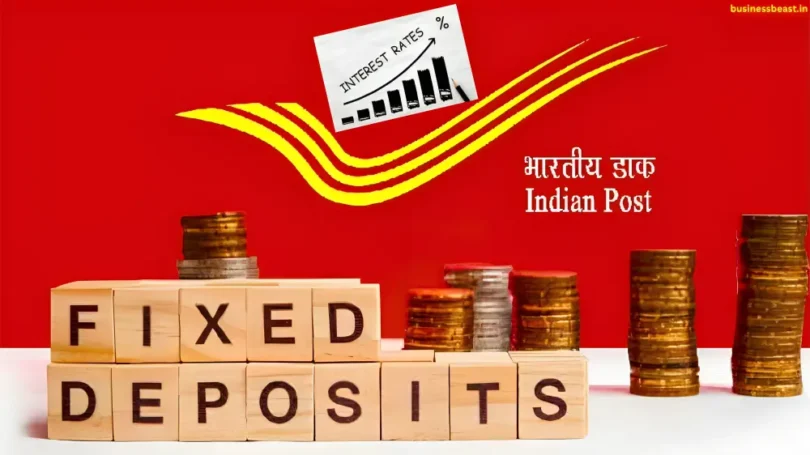Customers can invest in fixed deposit accounts through Post Office Fixed Deposit, a government-backed investment program, and by the conclusion of the process, they will get interest. One of the best interest rates available in India for fixed deposits is the post office fixed deposit rate.
From many aspects, post office fixed deposit plans resemble those of banks and non-banking financial companies. The primary differentiator is that all post offices offer government-sponsored programs to all residents. Post office FD interest plans are more popular among people in rural areas than in metropolitan ones.
Who Should Invest in Post Office Fixed Deposit?
Post office fixed deposit plans are more likely to accommodate the requirements and preferences of those with lower incomes. When kids reach 10 years old, parents often push them to invest in these programs. The principal causes of the higher participation rate in these programs among individuals from rural areas are the low investment rates and the absence of an interest rate tax deduction. Despite not requiring a tax deduction and providing the best interest rates available, the post office FD scheme is open to individuals from all social groups, backgrounds, occupations, and statuses.
Benefits of Post Office Fixed Deposit
- When considering an investment in post office fixed deposit programs, it is important to weigh the potential rewards against your options. The following are some noteworthy advantages of post office FD schemes.
- The security and safety of the entire plan are guaranteed by the fact that all post office fixed deposit plans are government-backed schemes.
- In comparison to other banks and non-banking organizations, post office FD rates are often higher than those of other fixed deposit programs in India.
- The post offices promise or assure returns. For this reason, investing in post office deposit programs is very safe.
- When the rate of inflation falls below the interest rate on a term deposit, the investor typically makes more money.
- These schemes are meant to provide you with your guaranteed interest rate and an ensured money guarantee, regardless of when and how market swings occur.
Features of Post Office Fixed Deposit
The following list includes some important considerations you should make before investing in post office fixed deposit plans.
- Before investing in post office fixed deposit programs, investors can select from a variety of tenure options. The bare minimum of time that one can choose is seven days. The ten-year timeframe may extend to five years.
- The tenure that the depositor chooses before investing determines the interest rate in post office fixed deposit plans.
- Both cash and checks can be used to make investments.
- The ability for investors to make early withdrawals beyond the six-month mark from the date of the initial investment is another noteworthy advantage of the Post Office Fixed Deposit Scheme.
- In addition, there is a nomination facility for the post office fixed deposit plans. Regarding post office FD plans, it is hassle-free if an investor designates another person to take money from their account.
- Once they reach the age of ten, anyone can oversee the plans. When youngsters become 18, though, they will need to transfer their accounts into their names.
Types of Post Office Fixed Deposit Schemes
National Savings Time Deposit Account (TD)
- You can open a deposit for one, two, three, or five years with a National Savings Time Deposit Account.
- Your tenure affects the interest rates on fixed deposits that the post office offers.
- Section 80C allows for a tax deduction of up to Rs 1.5 lakhs on the post office’s five-year duration fixed deposit.
- Moreover, you can register a joint account with up to three account holders or a single account as the owner of a fixed deposit.
National Savings Monthly Income Account (MIS)
- With this five-year-term fixed deposit, you can earn a monthly income.
- A minimum deposit of Rs 1,000 is required, and deposits can be made in multiples of Rs 1,000.
- The maximum deposit for a single account is Rs 4.5 lakhs, and the maximum deposit for a joint account is Rs 9 lakhs.
- Interest is payable at the end of each month until maturity when it is taxed according to the account holder’s tax bracket.
- This type of fixed deposit is suitable for those who would prefer a monthly income.
Post Office FD Interest Rates
The National Savings Time Deposit Account’s current interest rates, which will apply from October 1, 2023, to December 31, 2023, are shown below:
| Tenure | Interest Rate |
| 1 year | 6.9% |
| 2 years | 7% |
| 3 years | 7% |
| 5 years | 7.5% |
The National Savings Monthly Income Account currently has an interest rate of 7.4%.
Post Office vs Other Banks’ FD Rates
| Name of the Banks | FD Rates | Post Office FD Rates |
| State Bank of India | Regular FD rates – 3.00% to 7.10%
Senior citizen FD rates – 3.50% to 7.60% |
6.90% – 7.50% |
| HDFC Bank | Regular FD rates – 3.00% to 7.25%
Senior citizen FD rates – 3.50% to 7.75% |
6.90% – 7.50% |
| Axis Bank | Regular FD rates – 3.50% to 7.20%
Senior citizen FD rates – 3.50% to 7.95% |
6.90% – 7.50% |
| Punjab National Bank | Regular FD rates – 3.50% to 7.25%
Senior citizen FD rates – 4.00% to 7.75% |
6.90% – 7.50% |
| Bank of India | Regular FD rates – 3.00% – 7.00%
Senior citizen FD rates – 3.50% – 7.50% |
6.90% – 7.50% |
| Canara Bank | Regular FD rates – 4.00% to 7.25%
Senior citizen FD rates – 4.00% to 7.75% |
6.90% – 7.50% |
| IDBI Bank | Regular FD rates – 3.00% to 6.75%
Senior citizen FD rates – 3.50% to 7.25% |
6.90% – 7.50% |
Eligibility Criteria
If you’re thinking about investing in a post office FD program soon, you should take into account the eligibility requirements required for these schemes.
- To invest in the government-backed post office FD plans, you must be an Indian resident.
- Individual investments in post office fixed deposit accounts are permitted for people without children. Additionally, they can invest together.
- Post-office Federal Deposit Accounts may be managed by minors who are at least ten years old. But until they become eighteen, the account is still registered in their legal guardian’s name.
- Children who are ten years of age or older may have their accounts managed by legal guardians. Post office FD schemes in India can be managed and invested in by parents of autistic children and similar individuals.
- You can participate in an Indian post office savings plan if you are a business owner.
- Across the nation, investments in these schemes are permitted for trusts, non-resident individuals, and other organizations.
Documents Required
- Before investing in an Indian post office savings account (FD) plan, review the necessary paperwork.
- You will be required to present official government-backed IT, energy, and phone bills, passports, post office certificates, other bank statements, and checks as confirmation of your address.
- To apply for and make an investment in any fixed deposit program in India, you must provide identification. He will be required to provide the authorities with your passport, Aadhar card, driver’s license, voter ID card, and PAN card credentials to prove your identification.
- It is required to present your passport-sized pictures to create a savings account at any Indian bank or post office.
- Before you begin the program, you must give the post office the nominee’s details.
- The post office must receive verified KYC paperwork, an active DOP (Department of Post) card, or debit card information.
- When you apply for a post office FD account in India, you must submit some important documents.
Final Thoughts
Post office fixed deposits are an excellent way to save money because of the sovereign guarantee offered by the federal government, which minimizes the risk of principal loss. Investing once and receiving a fixed income every year or month, based on your needs, is one possibility. Investing in a guaranteed-return, government-backed product is one way to diversify your holdings and control risk.








Leave a Comment